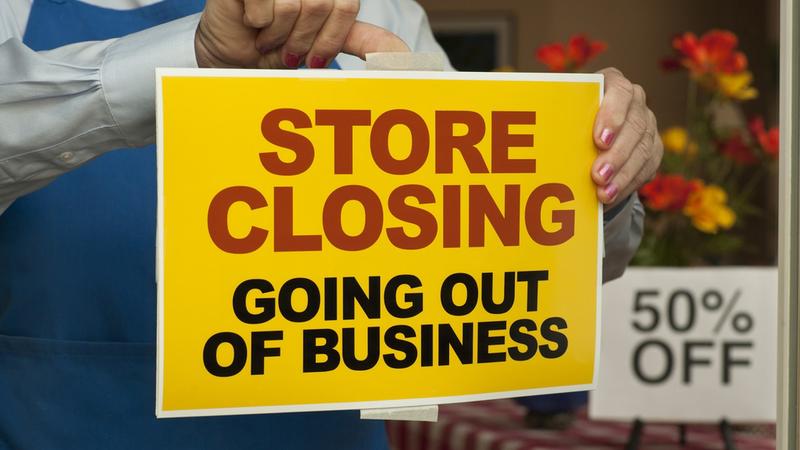how to build an options trading strategy

The nomenclature in the business world can be quite perplexing, particularly when it comes to money matters, merely understanding the many rigorous rules related to with finances is critical to a company's survival and succeeder. Ideally, a business thrives, and owners can concentrate on laws attached financial reporting, stock offerings and money direction, but it's equally important to come after the rectify legal rules and procedures when a business is struggling financially.
If a company's financial difficulties progress pertinent of insolvency — a state that occurs when the company can no longer pay its debts — very specific rules must be followed to ensure that bankrupt trading doesn't occur. To helper you better empathise the rules and repercussions, we've put in collaboration this quick guide to excuse insolvent trading claims and related topics like-minded liquidation and bankruptcy.
In layman's footing, you can suppose of insolvency as the set off for bankruptcy. It's a sign of severe economic distress that comes in two forms: cash in on flow insolvency and proportion tack insolvency. Cash flow insolvency occurs when debtors Don River't have the money to make payments connected fiscal obligations when they're collectible. In some cases, it could be a temporary situation that is corrected as soon as money comes into the company from sales, loans operating theatre opposite sources.

Balance piece of paper insolvency is more severe and occurs when the company's debts are greater than its assets. This type of insolvency is often the tipping point that pushes a company over the boundary into bankruptcy, either in the form of debt restructuring or total elimination of assets. Collectible to the differences in types, a business seat be insolvent without being bankrupt if it can correct the cash flow job. However, it can't be smash without first being insolvent.
Insolvent Trading Claims: A Brief Definition
For businesses approximately the creation, putt shareholders first-year is par for the feed during median business operations. Still, once a company becomes insolvent, the focus must lawfully shimmy to winning care of creditors above everyone else. Continuing daily business operations that could potentially incur additive debt when a business already can't pay its existing debts leaves accompany directors dangerous to insolvent trading claims. If these claims are deemed valid, the directors are subject to civil penalties, including being held personally responsible debts incurred during multiplication of insolvency.

In Europe, insolvency laws are similar to U.S. bankruptcy laws, except they make traditionally focused less on restructuring insolvent businesses to generate them a gamble to get along profitable once more. In other words, reorganization bankruptcy — Chapter 11 in the U.S. — is much less common in Europe, although the Pentateuch vary from country to state. Experts believe that rectif is necessary and will give businesses a bettor chance of recovering while limiting creditors' losses.
Who Makes Insolvent Trading Claims?
When a fellowship becomes insolvent, a liquidator is equipped to protect the interests of the company's creditors and pay off assets to pay debts. When liquidators are notified of insolvent trading, they are obligated to investigate. They often pioneer insolvent trading claims themselves, but creditors rear end also take action regarding their debts. The exact period generally extends for a period of several years, starting from the onset of liquidation. Unless a troupe's directors had reasonable grounds to believe the company was dissolver when they conducted business, creditors could pursue action to collect debts from the directors personally.

Liquidation Explained
In European markets and U.S. bankruptcies like Chapter 7, insolvency triggers the decision to last a business organization and liquidate the business' assets, either away distributing its assets to various creditors or by selling the assets and distributing the proceeds to the versatile creditors. Once the process is complete, the business no more exists.

In the U.S., the Section of Justice oversees the dispersion of assets. In most cases, the first distributions attend creditors with the most senior claims WHO secured parallel along the loans they provided to the business. Unsecured creditors like bondholders and employees are paid next. If any cash in hand are left-of-center after paying those debts, shareholders receive the remaining assets.
U.S. Bankruptcy Laws
Reported to Internal Revenue Service rules in the U.S., a person or entity is insolvent when their total liabilities are greater than their total assets. At that point, bankruptcy is a valid collection tool governed by federal laws for creating a plan for paying creditors. Failure laws in the U.S. favor reorganization of debt Sir Thomas More often than European insolvency systems. Chapter 11 failure allows a business' direction squad to continue with daily trading operations throughout the reorganization process.

The bankruptcy courts let to approve all major business decisions, but this gives the business a chance to reconstitute its debt to reduce payments and potentially regain profitability. Chapter 7 failure, however, requires the line of work to halt all operations. The courts appoint a regent to sell the company's assets to remuneration the company's debts in that form of bankruptcy.
how to build an options trading strategy
Source: https://www.askmoney.com/investing/insolvent-trading-claim?utm_content=params%3Ao%3D1465803%26ad%3DdirN%26qo%3DserpIndex
Posted by: douglasraides.blogspot.com

0 Response to "how to build an options trading strategy"
Post a Comment